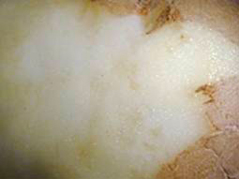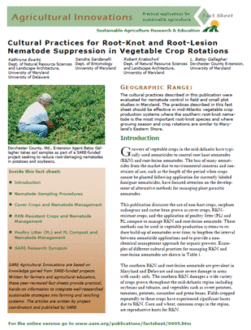Planting an RKN-resistant crop that can be harvested is a tactic that would allow growers to reduce nematode levels while still producing a marketable crop. The soybean cv. ‘Manokin’ (maturity group late IV-S) has resistance to RKN. Annual cropping of ‘Manokin’ resulted in consistent reduction in RKN detected in soil assays and less root galling (an indication of nematode damage) compared to roots of susceptible soybean cultivars. Because root galling is directly related to nematode reproduction, planting ‘Manokin’ or other RKN-resistant soybean cultivar should reduce RKN populations and improve crop performance over time.

While use of RKN-resistant soybeans has potential, it is important to choose cultivars that have maturity group ratings appropriate for the geographic region where they will be used as a double crop. In addition, ‘Manokin’ is susceptible to root-lesion nematode and therefore cannot be used alone for management in fields with a mixed species infestation of parasitic nematodes. Use of soybean or vegetable crops that are RKN resistant offer an economically attractive strategy for vegetable crop growers.
Field procedures
When grown as a double crop option, seed soybean cv. ‘Manokin’ at 175,000 seeds/acre following harvest of an early season vegetable crop. Maturity of ‘Manokin’ requires that it be planted no later than late June – early July if it is to be harvested for grain. Soybean may be used as forage, if season length does not allow grain harvest. Following harvest, a non-host (or poor host) crop for parasitic nematodes such as oat or rapeseed can be planted.
